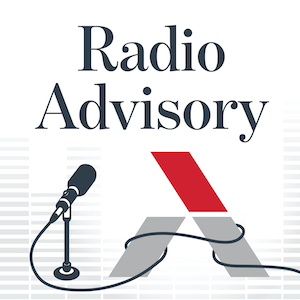Auto logout in seconds.
Continue LogoutAlthough the No Surprises Act will ban most surprise medical bills, urgent care centers are not explicitly addressed in the legislation—leaving a gap where patients could be at significant risk for big bills, Rachana Pradhan writes for Kaiser Health News/NBC News.
Radio Advisory: The biggest transparency and surprise billing policies coming your way
'You do all the right things, ask all the right questions'
Last November, Bryan Keller fell off his bike and dashed his head against the pavement, resulting in a cut on his forehead. Instead of heading to an ED, where he might have waited hours amid a spike in Covid-19 cases, Keller made his way to a nearby CityMD urgent care clinic to treat his injuries.
At the clinic, staff told him a plastic surgeon would stitch up his forehead, something Keller thought strange considering it was an urgent care clinic. So, even in his "delirium" after the accident, Pradhan writes, Keller asked the staff several times if his health insurance would cover the procedure.
According to Keller, the staff not only said it "'should be covered'" as "part of an emergency procedure," but that the plastic surgeon in question comes to the clinic "'all the time.'" But despite the staff's assurance, Keller was hit with a $1,039.50 bill for the five stitches he received from the plastic surgeon, who was an out-of-network physician working at the in-network urgent care clinic.
"It really irked me that—it's this classic thing you hear in this country all the time," Keller said. "When you do all the right things, ask all the right questions, and you're still hit with a large bill because of some weird technicality that there's absolutely no way for you to understand when you're in the moment."
Matt Gove, chief marketing officer at Summit Health, which owns CityMD, said the urgent care clinic's "normal procedure" is to "make the patient aware that this is available to them and that they can then make the choice as to whether or not it's important to them to be seen by a plastic surgeon."
Ultimately, Keller said his health insurer, Aetna, rejected his appeal to fully cover the cost of his stitches.
Urgent care facilities not covered under the No Surprises Act
According to Pradhan, Keller's experience highlights the regulatory "gray area" of urgent care clinics under the forthcoming No Surprises Act, passed in December 2020 and scheduled to take effect in January 2022, which will ban most surprise medical bills. The law is intended to protect patients with private insurance from unexpected charges, including emergency out-of-network care, treatment from out-of-network providers at in-network facilities, and aerial ambulance transportation.
However, Pradhan writes that urgent care centers, such as the one where Keller received his surprise bill, were not explicitly included in the No Surprises Act and may not be covered under the law. Recent interim regulations released by several federal agencies also have not included protections for patients being treated by out-of-network providers for non-emergency issues at in-network urgent care facilities.
"You don't have protections if it turns out the doctor or the physician assistant was out of network," Jack Hoadley, a research professor emeritus at the McCourt School of Public Policy at Georgetown University, said.
The gray area of urgent care centers
According to Pradhan, the rules under the No Surprises Act have not been finalized, and HHS and three other federal agencies are looking into the frequency of surprise bills at urgent care centers as well as how health insurers contract with them.
In addition, the Biden administration has shown an interest in including urgent care centers under the law, proposing a ban on surprise bills at urgent care centers licensed to perform emergency procedures. This proposal essentially categorizes urgent care centers as freestanding EDs, Pradhan writes.
However, in most states urgent care centers are not encouraged to provide emergency procedures or even licensed as health care facilities. In fact, a report from Community Catalyst and the National Health Law Program in March found that fewer than 10 states issue health care facility licenses to urgent care centers—a situation that could stymie efforts to treat the facilities as freestanding EDs.
In addition, Lou Ellen Horwitz, CEO of the Urgent Care Association, said urgent care centers are more akin to private physician offices than EDs or other hospital facilities. She added that the association would oppose any federal effort to classify urgent care centers as independent EDs or other health care facilities, saying doing so "contradicts" the purpose of urgent care, which is "to treat non-life-threatening injuries and illnesses."
According to Pradhan, experts say that if this issue with urgent care centers is not addressed before the new law goes into effect next year, the gap in regulations could leave patients at risk.
"There's a real interesting question about whether [the law] should apply to the extent that people perceive [urgent care centers] as places to go for an emergency," Hoadley said. (Pradhan, Kaiser Health News/NBC News, 7/29)
The biggest policies coming your way
As Covid-19 begins to slow down in the United States, the health care world is starting to refocus on some of the issues that permeated the space before the pandemic. In this episode, Rae sits down with Advisory Board's Rob Lazerow and Heather Bell to talk about how three new policies—hospital price transparency, payer price transparency, and surprise billing—will affect the health care industry.
First regulation provides needed clarity—but leaves some questions unanswered
 By Heather Bell, Senior Consultant
By Heather Bell, Senior Consultant
The Biden administration on Thursday released the first of three rules to implement the No Surprises Act—and while the rule leaves several questions unanswered, it offers providers and insurers more clarity on key definitions.
For example, the rule more clearly defines emergency and post-stabilization services that will be protected from balance billing. The rule also details the methodology insurers will use for calculating the qualifying payment amount—which will be used to determine patients’ cost-sharing—as well as the information related the qualifying payment amount that insurers must be prepared to share with providers.
While we're still waiting for regulations on the newly created independent dispute resolution (IDR) process for providers and insurers, the rule offers more clarity on the steps providers and insurers must take to notify patients about out-of-network care costs, as well as steps that must be completed before providers and insurers can enter the IDR process. For example, the law allows certain eligible out-of-network providers to balance bill patients if they receive the patient's written consent. This consent form must be provided at least 72 hours before the date of service, and the rule specifies requirements related to the notice. Providers should pay close attention to this requirement and their transparency practices and find ways to alleviate tension the process could create with patients. In addition, the rule gives insurers 30 days after the provider submits a bill—and any applicable consent forms—to send "an initial payment or notice of denial of payment."
But there are a few policies that the Biden administration is collecting comment on before it makes a final proposal. For example, the Biden administration included requests for comment on whether to set a minimum payment rate and how such a rate should be defined and calculated, alternative approaches to calculating cost-sharing for out-of-network air ambulances, and additional ancillary services that should be barred from balance billing.
As we await future rulemaking, providers and insurers should take the opportunity to share feedback with the departments on the interim final rule's proposals. If you haven't yet, health care organizations should evaluate their current exposure by auditing billing data to identify how much of your revenue comes from surprise billing.
Don't miss out on the latest Advisory Board insights
Create your free account to access 1 resource, including the latest research and webinars.
Want access without creating an account?
You have 1 free members-only resource remaining this month.
1 free members-only resources remaining
1 free members-only resources remaining
You've reached your limit of free insights
Become a member to access all of Advisory Board's resources, events, and experts
Never miss out on the latest innovative health care content tailored to you.
Benefits include:
You've reached your limit of free insights
Become a member to access all of Advisory Board's resources, events, and experts
Never miss out on the latest innovative health care content tailored to you.
Benefits include:
This content is available through your Curated Research partnership with Advisory Board. Click on ‘view this resource’ to read the full piece
Email ask@advisory.com to learn more
Click on ‘Become a Member’ to learn about the benefits of a Full-Access partnership with Advisory Board
Never miss out on the latest innovative health care content tailored to you.
Benefits Include:
This is for members only. Learn more.
Click on ‘Become a Member’ to learn about the benefits of a Full-Access partnership with Advisory Board
Never miss out on the latest innovative health care content tailored to you.

